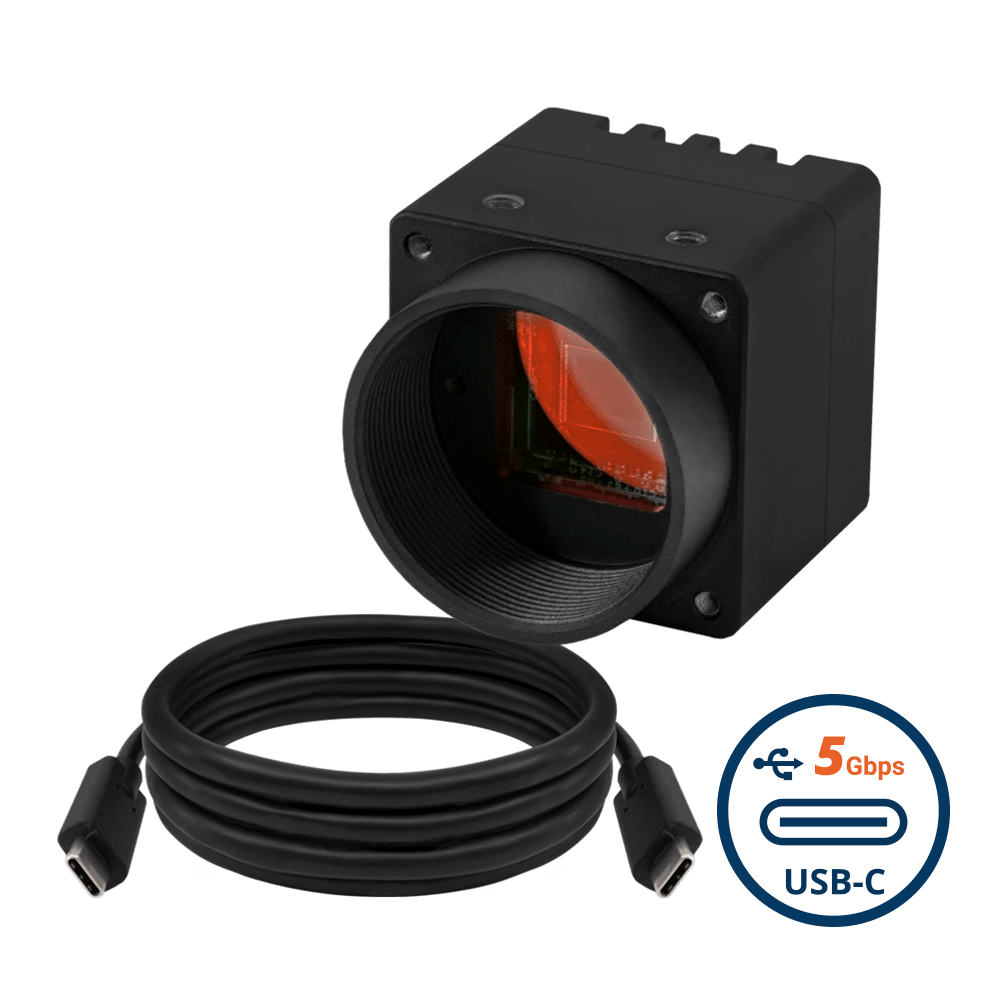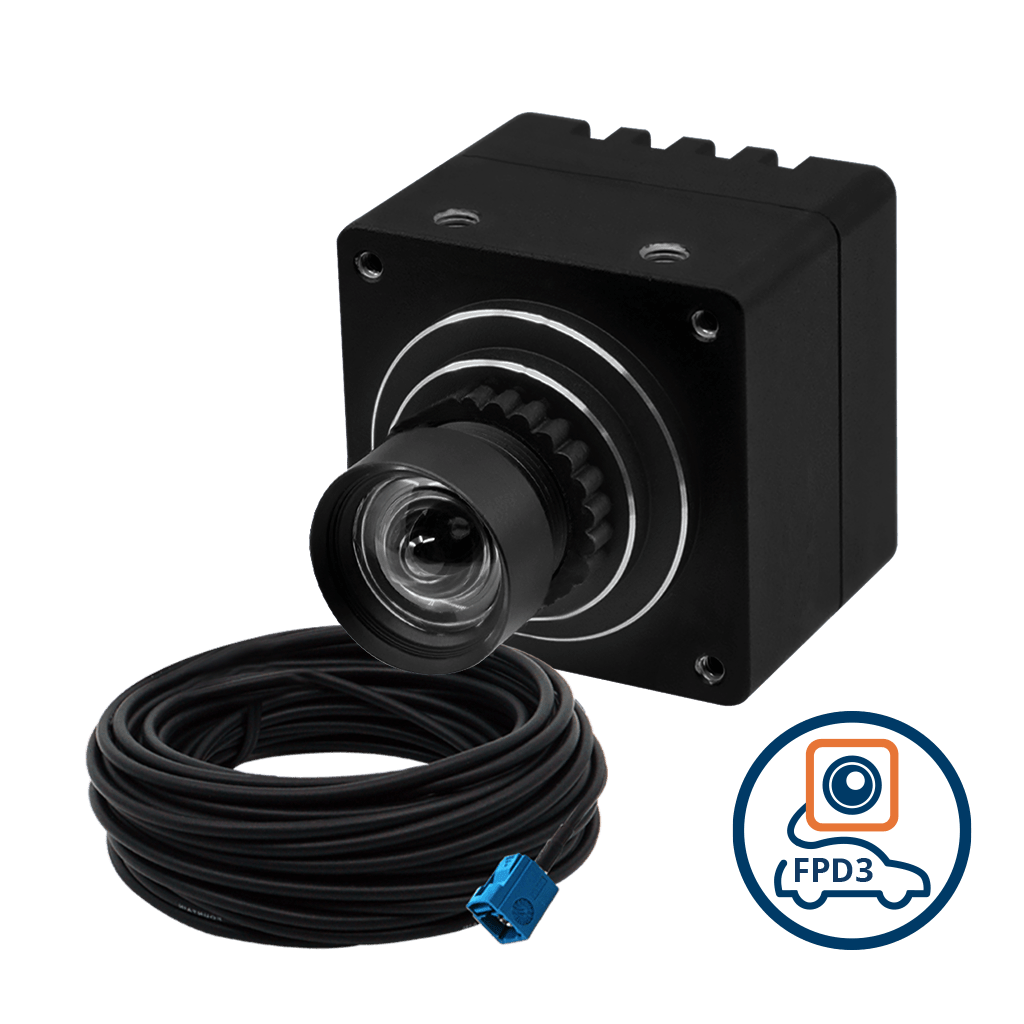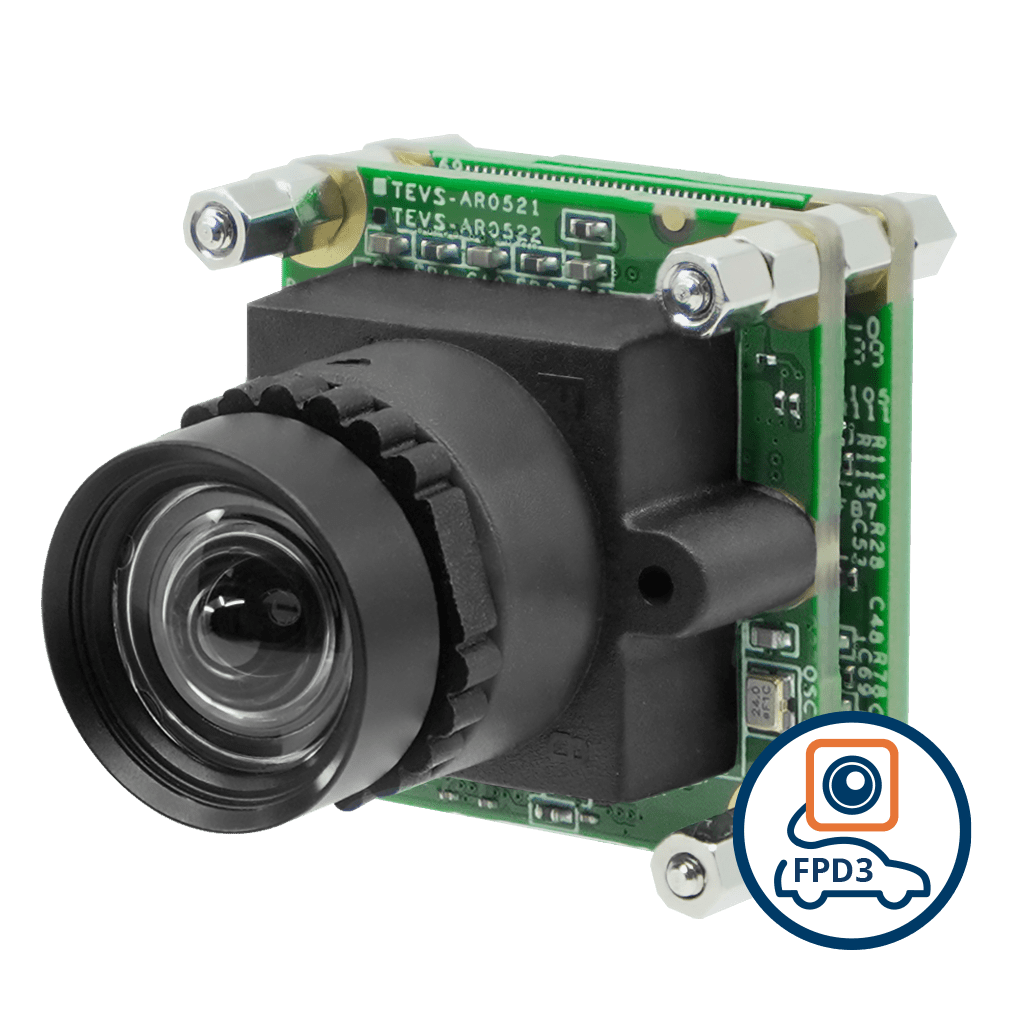Embedded vision cameras are a critical component of modern-day imaging technology, capable of perceiving, analyzing, and acting upon visual data. Zoom functionality is one of the most important factors influencing an embedded vision system’s effectiveness.
Optical and digital zoom are the two types used in embedded cameras. Optical zoom offers greater clarity and detail than digital zoom but is limited by the physical optics of the camera lens. Digital zoom can magnify an image beyond what optical lenses can support, but this comes at the cost of reduced image quality. While both offer advantages that make them suitable for certain image-capturing applications, it’s vital to consider their strengths and weaknesses before the selection. In this blog post, we explore the definitions, applications, and benefits of optical and digital zoom so that you can decide what to opt for.
Optical Zoom in Embedded Vision
Embedded vision systems are designed to provide precision and adaptability for various applications, from robotics to security. One key feature that amplifies the performance of these systems is optical zoom. Optical zoom allows the camera’s lens elements to be physically adjusted, providing genuine magnification that keeps the subject sharp and clear, even when installed in tight spaces.
How Optical Zoom Works Using Lens Adjustments in Embedded Systems
The complexity of optical zoom in embedded vision lies in the construction of its lenses. These lenses possess multiple elements which can be adjusted to change the focal length. By shifting the distance between these lens elements, incoming light is bent and magnified before it reaches the camera’s sensor. This physical alteration is especially important for embedded systems where software enhancements may be difficult to implement due to processing restrictions.
Benefits of Optical Zoom in Embedded Vision Systems
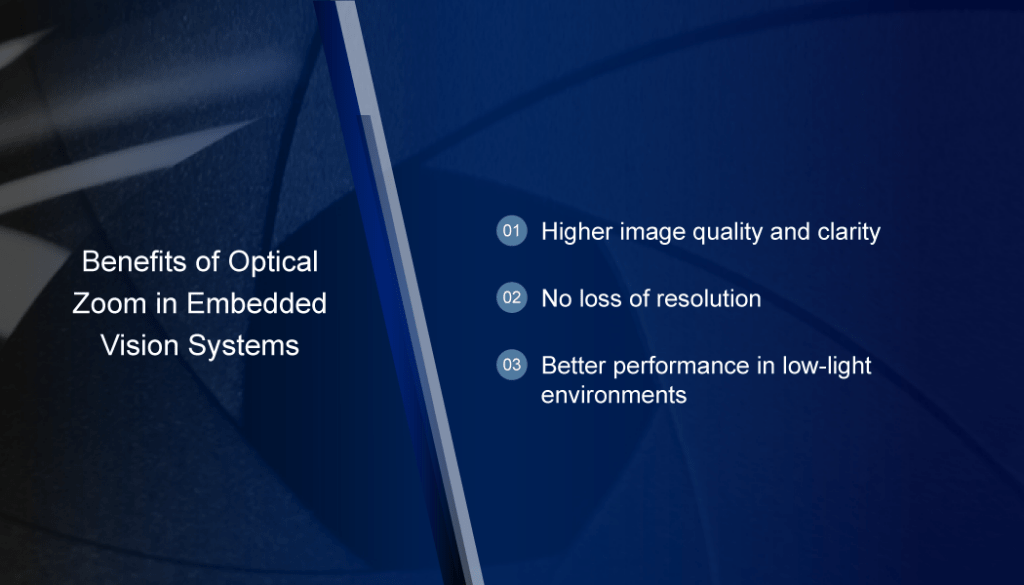
- Higher image quality and clarity: Optical zoom is an invaluable tool for embedded systems, where high-quality visuals are essential.
It eliminates the pixelation that often occurs with digital zoom, ensuring images remain clear and concise for quick decision-making.
- No loss of resolution: Embedded vision systems typically have specific resolution requirements based on purpose.
Optical zoom helps to take full advantage of the camera’s resolution, as it magnifies the image rather than simply cropping it from the sensor.
- Better performance in low-light environments: Optical zoom is a great feature for applications that require better performance in low light. It can be especially useful in surveillance, nocturnal embedded applications, robotics, and drone navigation. With its ability to use zoom without losing any image details optical zoom cameras make for a great choice in low-light applications.
Disadvantages of Optical Zoom
- Cost and complexity: Optical zoom lenses often cost more than their fixed counterparts, because they include moveable optics and a motorized system to allow control of the optical zoom.
- Size: Optical zoom lenses are typically larger, due to the requirement to motorize the position of certain lens elements.
- Fixed Central Zoom Field: Optical zoom basically narrows the field of view (FOV) of the lens system, and only zooms into (and out of) the center of the field of view. If better precision is needed in portions of the peripheral FOV (that are not in the middle), then a separate pan and tilt system are also required to change the orientation of the entire embedded camera.
Digital Zoom in Embedded Vision: Process and Limitations
Embedded vision systems are revolutionizing industries from automotive to healthcare, and the ability to zoom in on certain areas of a scene is critical. Digital zoom is one feature that offers flexibility but also comes with some challenges in the constrained environment of embedded systems. It doesn’t involve adjusting the optics of the camera and instead is a post-capture magnification process performed at a software level. This type of zoom makes it possible to simulate magnification without requiring physical lens adjustments, which might be impossible due to size or design limitations.
How Digital Zoom Works Through Cropping and Interpolation
Digital zoom is an alternative to optical zoom that uses image processing techniques instead of lens adjustments. It works by cropping and enlarging a chosen portion of the captured image, and then using interpolation to estimate the pixel values in the gaps. This method can be efficient, but it can also cause some compromises when used in embedded vision systems with limited processing resources.
Limitations of Digital Zoom in Embedded Vision Systems
- Reduction in image quality: When zooming in on a specific region of the sensor capture, the quality of the image can suffer due to pixelation, particularly if there is a significant amount of magnification. This can be especially problematic in embedded vision applications where clear, crisp images are crucial.
- Loss of detail and sharpness: Interpolation is an estimation technique often used in image processing. Since the process can lead to a softer image with less sharpness and detail, it could cause issues for applications that require high precision, such as facial recognition or defect detection.
- Inadequate low-light performance: Unlike optical zoom, digital zoom can struggle in low-light conditions. This is because magnifying a low-light image can further increase noise and reduce quality.
Comparative Analysis: Optical vs. Digital Zoom in Embedded Vision Systems
Understanding the complexities of zoom functionality is critical in embedded vision, where every pixel may play a key part in decision-making. As we compare optical versus digital zoom, it’s clear that each has its own set of advantages and disadvantages.
| Optical Zoom | Digital Zoom | |
|---|---|---|
| Image Quality Comparison with Visual Examples | Optical zoom is a great way to clearly view all the details of faraway objects. Adjusting the camera's lens magnifies the image while maintaining its original quality. An example of this would be a scenario where you wanted to get a clear shot of a bird from afar; optical zoom will allow you to capture every feather distinctly. | Digital Zoom works by enlarging a small area of the image, which can lead to lower image quality due to pixelation. For example, digital zoom on a bird may appear larger, but its feathers may lack sharp detail and blend. |
| Performance in Different Lighting Conditions | Optical Zoom uses true lens magnification to capture light more accurately and clearly. It produces clear images in various lighting conditions, from bright sunshine to dark rooms. | Getting good-quality images in low-light conditions can be difficult when using digital Zoom. However, it is to be noted that the low light performance of a camera depends on various other factors too (such as sensor sensitivity for example). |
| User Experience and Product Life | Optical Zoom offers unbeatable image quality but is less feasible for embedded vision applications that require a compact design. In addition, an optical lens could result in wear and tear on the device – thereby reducing its overall life. | Digital Zoom offers flexibility and adaptability, especially in systems with limited space. It is software-based, which can be more power-efficient in some applications. However, users may experience lower image quality when using higher zoom levels. |
When choosing between optical and digital zoom for embedded vision systems, users must consider the specific application, environmental conditions, and desired outcomes. Striking a balance between these factors is key to maximizing the performance of an embedded vision system.
Applications and Use Cases of Optical and Digital Zoom in Embedded Vision
Optical and digital zoom selection can heavily influence an embedded vision system’s effectiveness. We will explore which type of zoom is best for specific scenarios.
Scenarios Where Optical Zoom is Preferred in Embedded Vision
- Surveillance and security systems: Optical zoom is superior to digital zoom in terms of security since it provides clear, high-resolution imaging from long distances. This makes it an ideal choice for embedded vision applications in automated surveillance systems; with optical zoom cameras in place, dynamic focus can be maintained on potential threats or suspicious activities such as moving vehicles or unauthorized personnel entering a particular restricted zone.
- Industrial inspections: In industrial settings, optical zoom is crucial to detect tiny defects or ensure precision in machinery alignment, where the margin for error is small. Embedded vision cameras with optical zoom can be used on assembly lines to inspect products for minute imperfections and guarantee quality control. Furthermore, optical zoom also helps with robotics tasks such as welding and circuit board assembly that require high accuracy.
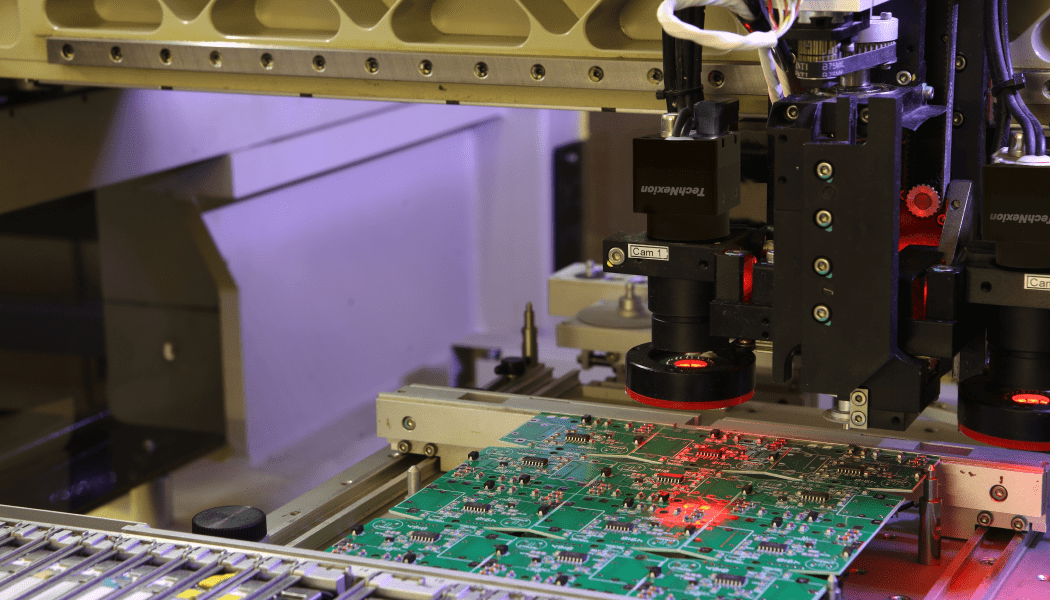
- Smart traffic and parking lot management: Optical zoom cameras might be needed in smart traffic and parking lot management devices. They need to perform ALPR (Automatic License Plate Recognition) from long distances; hence, optical zoom is perfectly suited.
- Sports broadcasting and analytics: To track their trajectories, automated sports broadcasting systems must zoom in on specific field areas, such as players and the ball. Optical zoom cameras are a better choice than digital ones in such a scenario.
Scenarios Where Digital Zoom Might Be Sufficient in Embedded Vision

Today, many use digital zoom-in embedded cameras owing to their flexibility to use the feature on a need basis. It might not be practical to carry a bulky lens system (for optical zoom) if zooming is required only rarely during the operation period of the camera. Hence digital zoom cameras have started replacing optical zoom cameras in many embedded vision applications today.
However, here are a few applications where a digital zoom lens would perfectly fit:
- Video conferencing: Video conferencing systems use magnification mostly to focus on a speaker or modify framing. Digital zoom is used to trim and enlarge the video stream by embedded cameras in laptops or special video conferencing systems, ensuring that participants are visible even if some image quality is sacrificed.
- In-vehicle surveillance systems: Most in-vehicle surveillance or dash cam systems do not need high precision or clarity. Digital zoom cameras are a convenient choice in this case, where the total size of the camera can be kept small.
- Patient monitoring systems: Patient monitoring systems are used to monitor patients in hospitals and care homes. A high level of detail is not required in these devices. And usually, only 2 to 3 levels of zoom are enough. Given this, digital zoom is a more practical choice in these systems.
While optical and digital zoom offer advantages, how well they are used in embedded vision systems depends on the application’s requirements. Understanding their subtleties is essential to fully utilize their potential, whether the accuracy of optical zoom in surveillance or the flexibility of digital zoom in video conversations.
Making the Right Choice
Factors to consider when selecting Zoom functionality
- Image quality: Determine the image quality necessary for your application. If accuracy, detail, and clarity are critical, optical zoom is the way to go since it can preserve high-resolution images without compromising quality.
- Application requirements: Understand your application’s exact requirements. For example, medical imaging or quality control checks may need the benefits of optical zoom.
- Low-light efficiency: Examine the illumination conditions in the areas where your embedded vision system will be used. Optical zoom fits better in low-light circumstances, enabling zoom without cropping the frame.
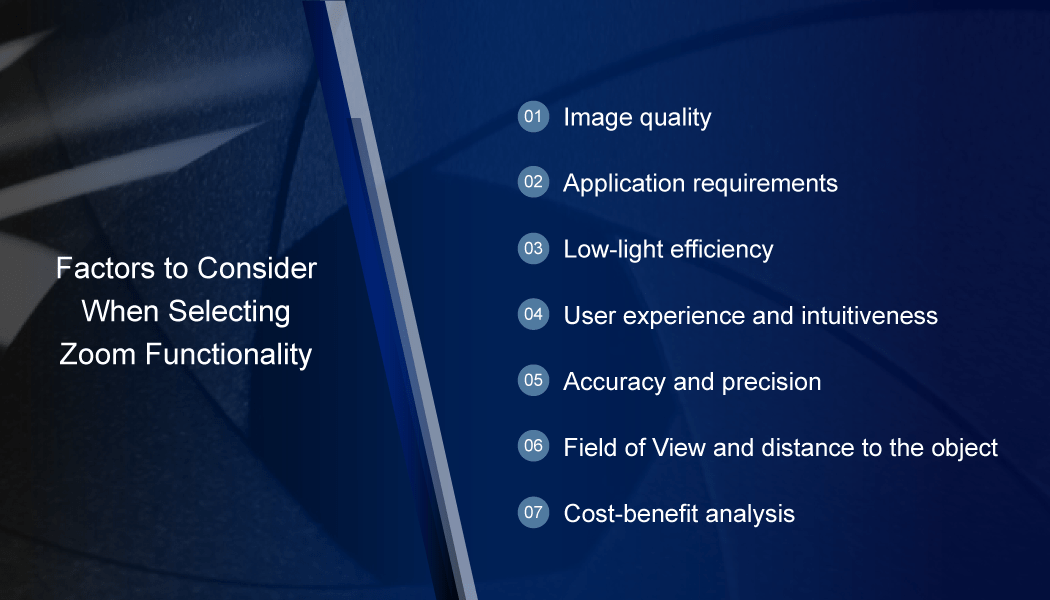
- User experience and intuitiveness: Consider the end user’s experience. Like classic cameras, optical zoom provides a more natural and familiar zooming operation. This can improve user comfort and interactivity.
- Accuracy and precision: Optical zoom’s capacity to preserve image quality when zooming guarantees reliable results for applications requiring exact measurements or analysis, which may be jeopardized by digital zoom.
- Field of View and distance to the object: Consider the field of view and distance to the thing to be captured. Optical zoom offers are a better choice if the ROI (Region Of Interest) is small and the distance to the object is long.
- Cost-benefit analysis: Weigh the advantages of optical zoom against the expense. Consider the prospective return on investment and if the improved image quality justifies the higher initial costs.
How TechNexion can Help You with Lens Selection
TechNexion offers the best of both worlds for embedded vision solutions: optical and digital zoom capabilities. Our cameras can be integrated with optical zoom lenses. We can also help you enable digital zoom by making the necessary customizations to our camera modules.
Related Products
- Optical Zoom in Embedded Vision
- How Optical Zoom Works Using Lens Adjustments in Embedded Systems
- Benefits of Optical Zoom in Embedded Vision Systems
- Disadvantages of Optical Zoom
- Digital Zoom in Embedded Vision: Process and Limitations
- How Digital Zoom Works Through Cropping and Interpolation
- Limitations of Digital Zoom in Embedded Vision Systems
- Comparative Analysis: Optical vs. Digital Zoom in Embedded Vision Systems
- Applications and Use Cases of Optical and Digital Zoom in Embedded Vision
- Scenarios Where Optical Zoom is Preferred in Embedded Vision
- Scenarios Where Digital Zoom Might Be Sufficient in Embedded Vision
- Making the Right Choice
- How TechNexion can Help You with Lens Selection
- Related Products
Get a Quote
Fill out the details below and one of our representatives will contact you shortly.

